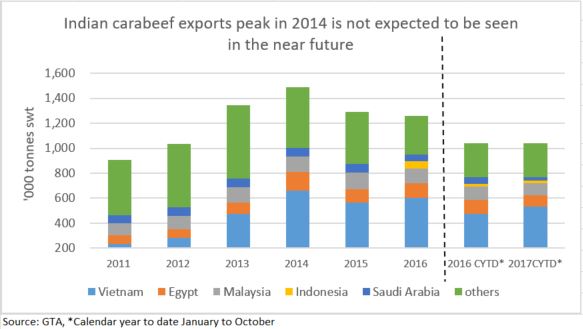
Many Git commands accept both tag and branch names, so creating this branch may cause unexpected behavior. Create the Html for a basic image cropper with a zoom slider.
#CROPIT EXPORT SIZE CODE#
The code here is working properly for the plugin but I'm unable to turn the result which looks something like data:image/png base64,iVBORw0KGgoAAAANSUhEUgAAAPoAAAD. into an image that I can use in a php script. The way I got it to work is by messing around with the quality settings of Cropit and creating a PHP function that reads the base64 string and converts it to an image. but after uploading image the final image gets resized to bigger size. I'm setting a timeout because if you don't it will send the form to php before cropit can create the base64. say i have uploaded png image with size 9kb it gets converted to 60kb after successful upload. The sector would benefit from investment in mechanization.I have read in few articles that adjusting quality param can control quality and size of image but no change getting happened. Opportunities include large-scale farming, farm inputs and equipment supply, irrigation systems, agro-processing, and commodity trading. OpportunitiesĪgricultural cultivation in Zambia is mostly non-mechanized, and the sector is overwhelmingly rain-fed. Private equity and other investors are active in this sector. The government is working to develop farm blocks in all ten provinces for large and medium commercial farming, fish farming, and livestock production. The Zambian government seeks to promote agriculture as a way to diversify the economy away from an overreliance on copper.

While the government has typically opposed importation or use of genetically modified organisms (GMO), the National Biosafety Authority in September 2021 granted import permits to two companies for pet foods made from GMO products, spices, tapioca starch, and soya isolates. Zambia has ample water resources but has done little to exploit them via investments in irrigation systems, and the majority of farms remain dependent on rain-fed growing cycles. However, only 15 percent of this land is currently under cultivation. Zambia covers 75 million hectares (752,000 km2), out of which 58 percent (42 million hectares) is classified as medium-to high-potential for agriculture production. Domestic production is comprised of crops such as maize, sorghum, millet, and cassava while exports are driven by sugar, soybeans, coffee, groundnuts, rice, and cotton as well as horticultural produce.



Agriculture contributes about 19 percent to GDP and employs three quarters of the population. Large-scale farmers produce various crops for the local and export markets. Medium-scale farmers produce maize and a few other cash crops for the market. Small-scale farmers represent the vast majority (approximately 90 percent) of Zambia’s agricultural producers and are generally subsistence producers of staple foods with occasional marketable surplus. There are three broad categories of farmers: small-scale, medium, and large-scale. The Zambian agriculture sector comprises crops, livestock, and fisheries. Economic Development Organizations (EDO).Foreign Direct Investment Attraction Events.Facing a Foreign Trade AD/CVD or Safeguard Investigation?.


 0 kommentar(er)
0 kommentar(er)
